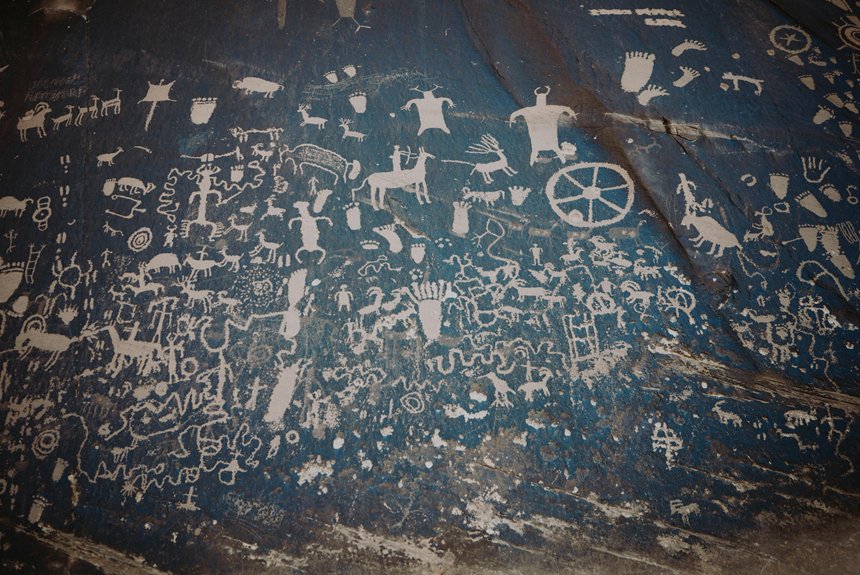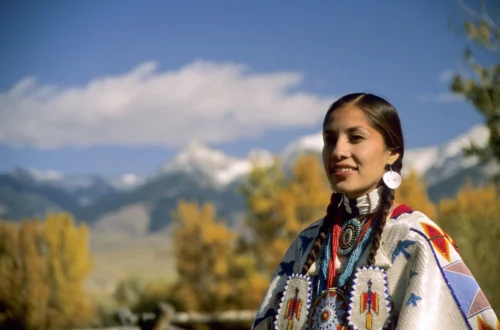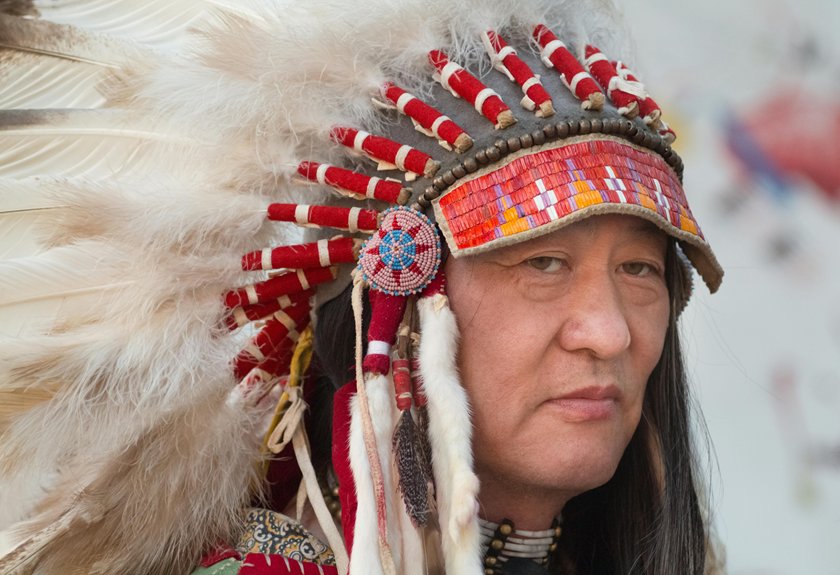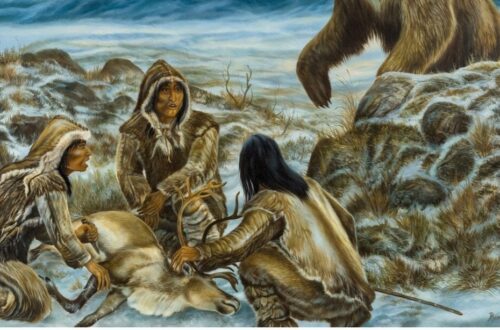Imagine a small group of ancient hunters crossing the icy expanse of the Bering Land Bridge, driven by a quest for new resources. These early migrants laid the foundation for the diverse societies that would emerge across North America. As you explore their journey, you’ll uncover fascinating insights into their cultural adaptations and the profound impacts they faced over millennia. What factors shaped their evolution into the rich tapestry of Native American cultures we see today?
The First Migrations: Crossing the Bering Land Bridge
As the last Ice Age waned, groups of ancient peoples ventured across the Bering Land Bridge, a land connection between Asia and North America that emerged during periods of lowered sea levels.
These brave migrants, driven by survival instincts, sought new hunting grounds and resources. They carried with them rich cultural traditions, languages, and knowledge of their environments.
Over generations, these early inhabitants adapted to diverse landscapes, from vast plains to dense forests, forging deep connections with the land. Their migration marked the beginning of a profound cultural tapestry that would evolve into the many Native American societies you recognize today.
Understanding this journey highlights the resilience and ingenuity of these early peoples as they established roots on this new continent.
Archaeological Evidence of Early Settlements
While many might envision Native American history as a tale told through oral traditions, archaeological evidence paints a vivid picture of early settlements across North America. Excavations reveal rich insights into the lives of these first inhabitants, showcasing their adaptability and ingenuity.
- Ancient tools and pottery fragments reveal daily life practices.
- Remnants of early dwellings highlight community structures and social organization.
- Burial sites provide insight into spiritual beliefs and rituals.
- Evidence of agriculture shows the development of sustainable food sources.
- Rock art and petroglyphs offer glimpses into cultural expressions and storytelling.
These findings not only deepen your understanding of Native American heritage but also honor the resilience and creativity of these early settlers as they shaped their world.
Genetic Studies and Ancestral Lineages
Genetic studies reveal fascinating connections between modern Native Americans and their ancient ancestors, shedding light on the migrations that shaped the continent. By analyzing DNA, researchers trace lineages that link contemporary tribes to populations that first arrived in North America over 15,000 years ago.
You’ll find that these studies highlight the remarkable diversity among tribes, reflecting unique adaptations to various environments. Furthermore, they uncover shared genetic markers among different groups, illustrating how interconnections existed long before European contact.
This scientific exploration not only enhances your understanding of history but also honors the resilience and rich heritage of Native peoples. As you explore these findings, you gain a deeper appreciation for the complex tapestry of ancestral narratives that define Native American identity today.
Cultural Adaptations to Diverse Environments
Native American cultures have thrived across a vast array of environments, each tribe developing unique adaptations that reflect their surroundings. You’ll find that these adaptations were crucial for survival and cultural expression.
- Hunting techniques: Tribes in the Great Plains mastered buffalo hunting, using innovative tools and communal strategies.
- Agricultural practices: In the Southwest, communities cultivated drought-resistant crops like corn and beans, essential for sustenance.
- Housing styles: From tipis in the Plains to adobe homes in the Southwest, dwellings were adapted to climate and resources.
- Clothing: Materials varied from animal hides in colder regions to plant fibers in warmer climates, showcasing resourcefulness.
- Spiritual beliefs: Customs and rituals often reflected the local environment, deepening the connection between people and land.
The Impact of European Contact on Native Populations
As European explorers and settlers arrived on the shores of North America, they brought profound changes that would dramatically affect Native populations.
Indigenous communities faced devastating consequences, including the introduction of new diseases like smallpox, which decimated entire tribes.
You’d see traditional ways of life disrupted as settlers claimed land, often through violent means, fundamentally altering the landscape and resources available to Native peoples.
Cultural exchanges did occur, leading to some hybrid practices, but these interactions were often imbalanced.
Native sovereignty was challenged, and many tribes were forced into treaties that favored European interests.
Despite these hardships, Native resilience shone through, as communities adapted and fought to preserve their identities and traditions in the face of overwhelming change.




